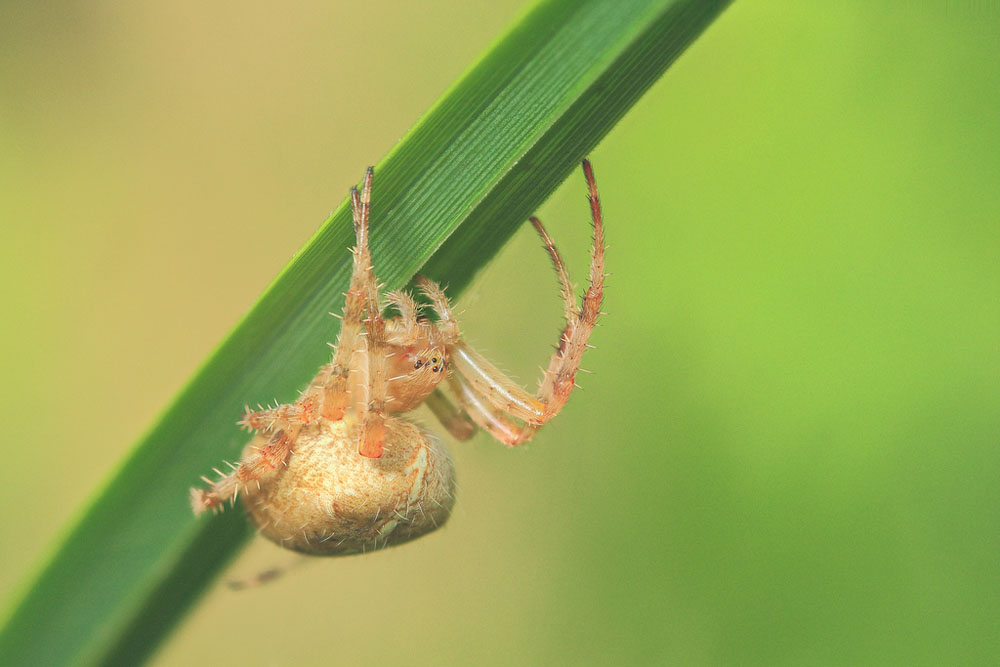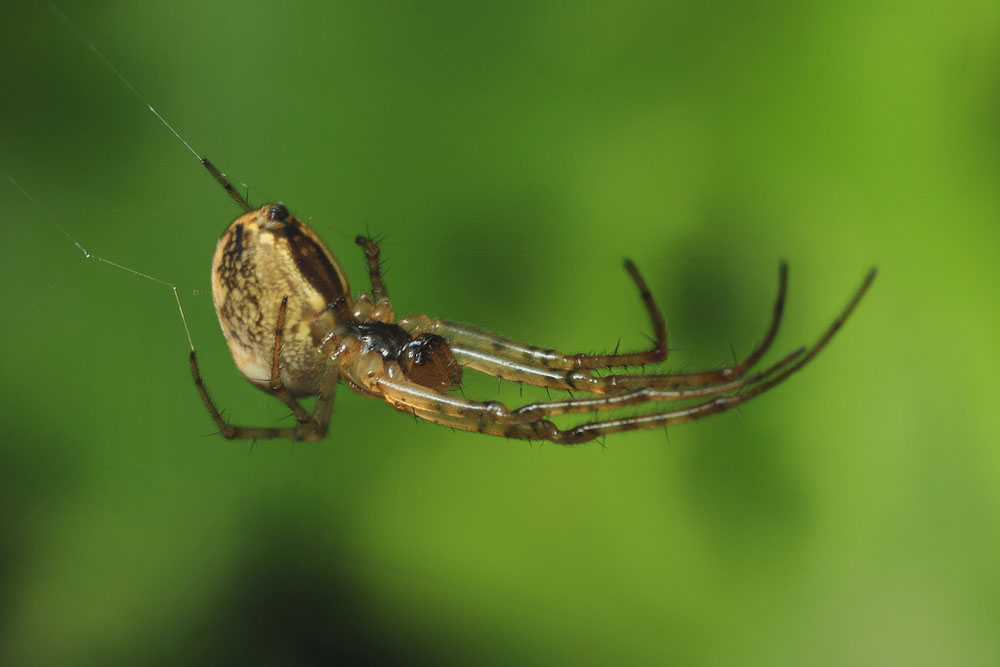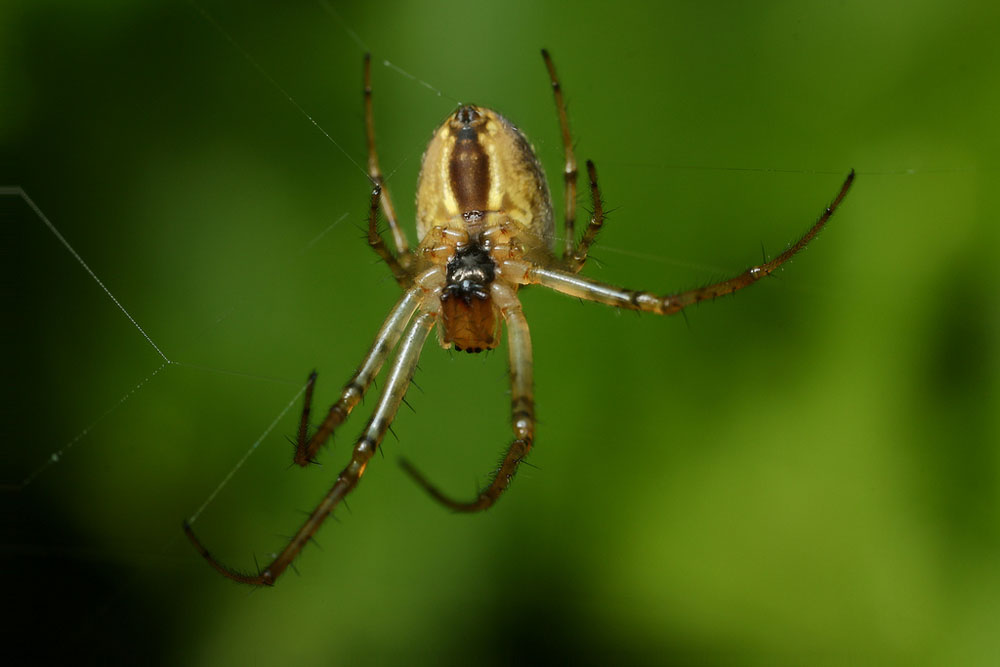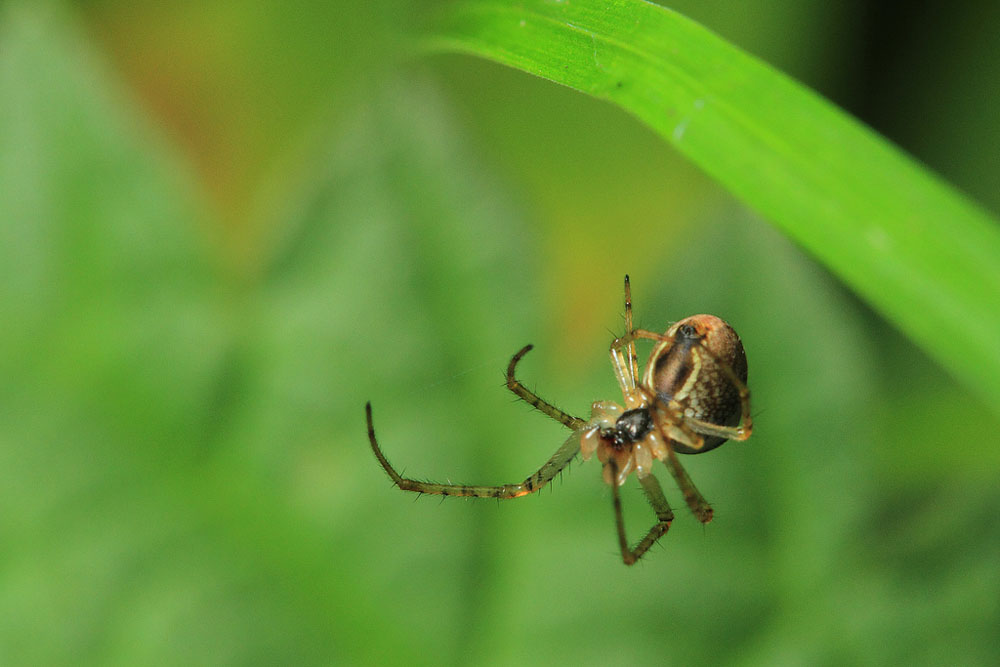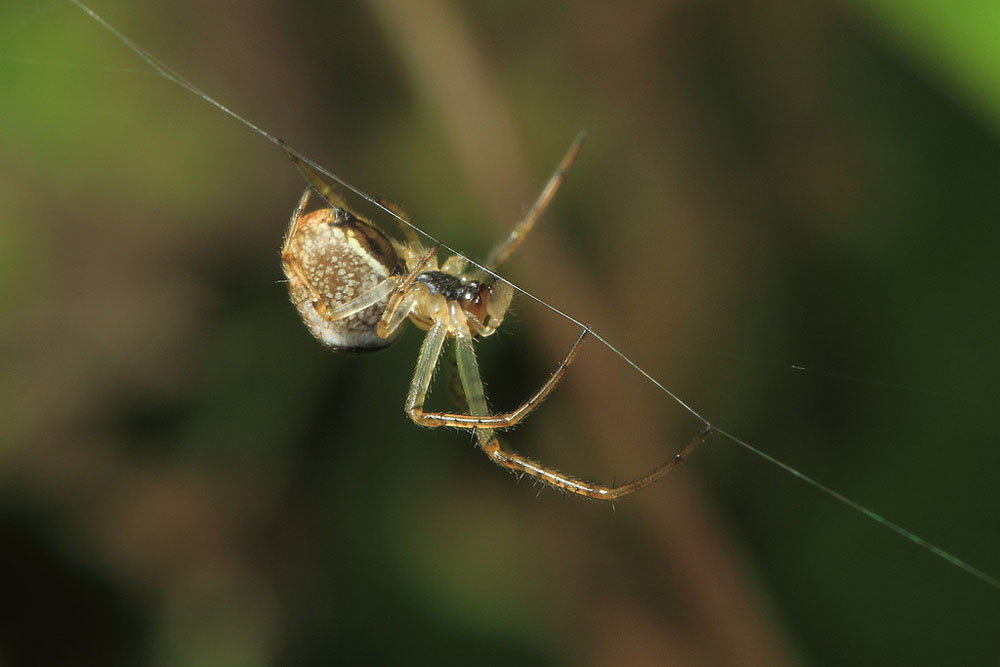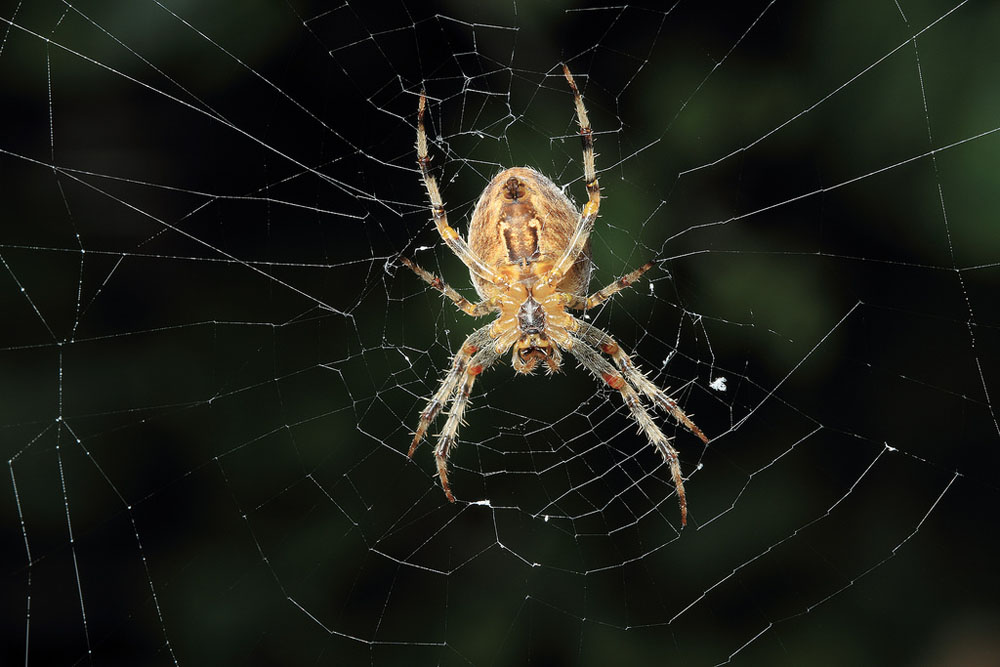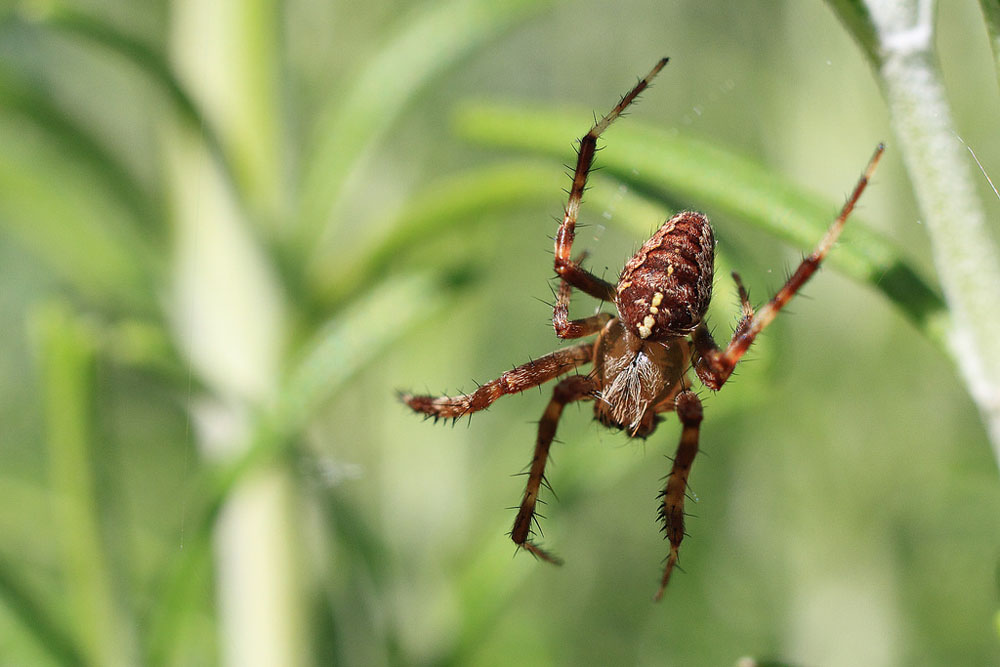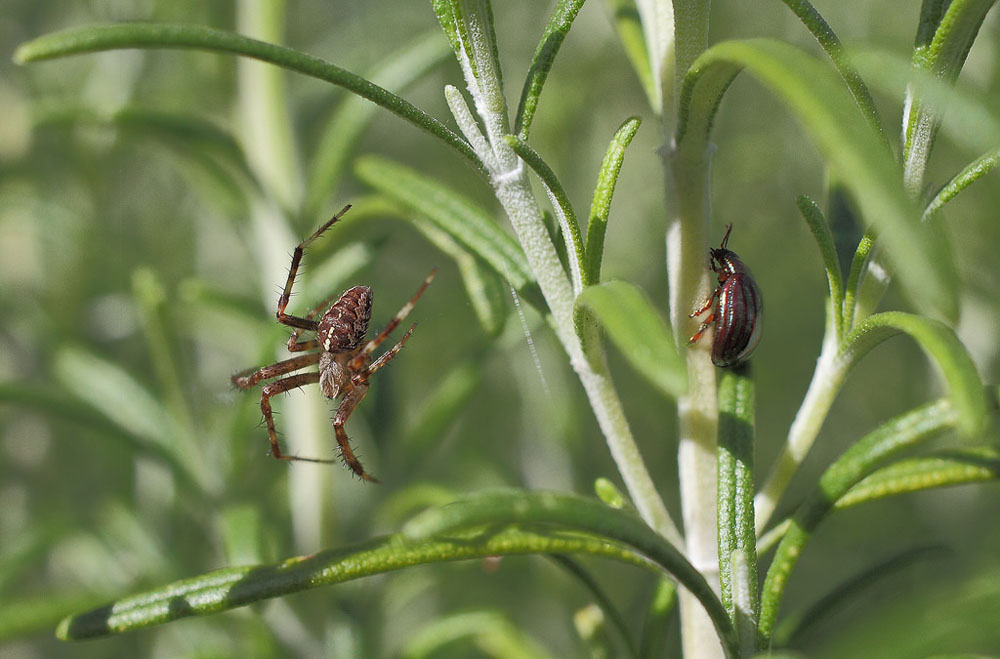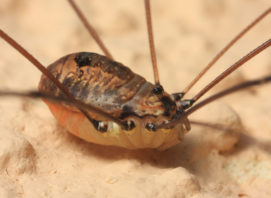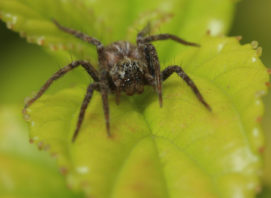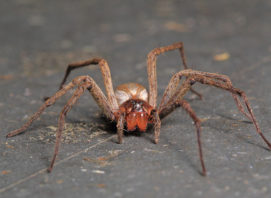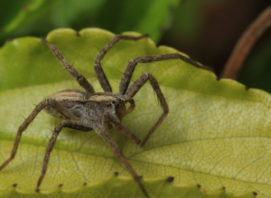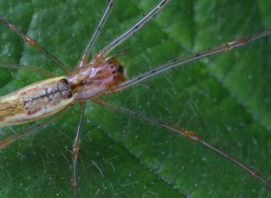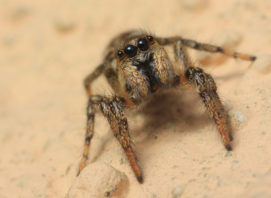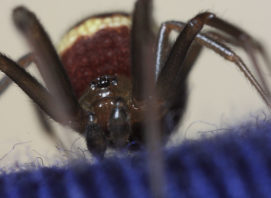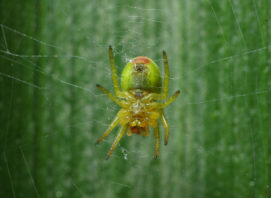Cross Orbweaver
The orb-weaver spiders (family Araneidae) are the builders of spiral wheel-shaped webs often found in gardens, fields and forests. Individual spiders can range from light yellow, to orange-brown or dark grey, but all European garden spiders have mottled markings across the back with five or more large white dots forming a cross. Usually, the cross-like markings are quite visible. The mother puts eggs in a small cocoon, which looks more like a little web.
The Cross Orbweaver is common in a wide range of habitats, including gardens, meadows, woodland clearings and hedgerows. It is commonly encountered next to buildings with exterior lighting. The spiders can be found in lighted stairwells of structures in rural areas.
The cross spider spins a large complex orb-web – up to 40 cm in diameter – used to capture insect prey. The webs are built by the large females. At the tip of the abdomen there are three pairs of spinnerets, which secrete silk used to create the web. They usually face head down on the web, waiting for prey to fly by and get entangled in the sticky web. The prey is quickly captured by the female and wrapped with silk prior to being eaten (see photo below).
Orb Spiders are said to eat their webs each night along with many of the small insects stuck to it. They have been observed eating the web within a couple of minutes. A new web is then spun in the morning.
The adults are found from late summer through autumn. In late September, the females leave their webs and seek out protected locations to deposit between 300 to 900 eggs. The eggs are enclosed within a cocoon of yellow, silken threads, shaped in a hemisphere. Typical egg deposition sites include under the bark of dead trees and in cracks and crevices.

